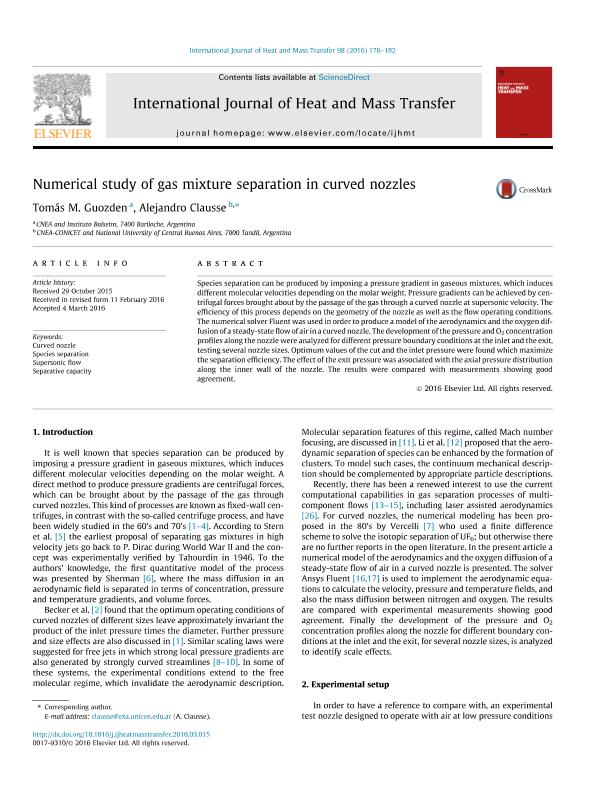Artículo
Numerical study of gas mixture separation in curved nozzles
Fecha de publicación:
07/2016
Editorial:
Pergamon-Elsevier Science Ltd
Revista:
International Journal Of Heat And Mass Transfer
ISSN:
0017-9310
Idioma:
Inglés
Tipo de recurso:
Artículo publicado
Clasificación temática:
Resumen
Species separation can be produced by imposing a pressure gradient in gaseous mixtures, which induces different molecular velocities depending on the molar weight. Pressure gradients can be achieved by centrifugal forces brought about by the passage of the gas through a curved nozzle at supersonic velocity. The efficiency of this process depends on the geometry of the nozzle as well as the flow operating conditions. The numerical solver Fluent was used in order to produce a model of the aerodynamics and the oxygen diffusion of a steady-state flow of air in a curved nozzle. The development of the pressure and O2 concentration profiles along the nozzle were analyzed for different pressure boundary conditions at the inlet and the exit, testing several nozzle sizes. Optimum values of the cut and the inlet pressure were found which maximize the separation efficiency. The effect of the exit pressure was associated with the axial pressure distribution along the inner wall of the nozzle. The results were compared with measurements showing good agreement.
Palabras clave:
Curved Nozzle
,
Separative Capacity
,
Species Separation
,
Supersonic Flow
Archivos asociados
Licencia
Identificadores
Colecciones
Articulos(CCT - TANDIL)
Articulos de CTRO CIENTIFICO TECNOLOGICO CONICET - TANDIL
Articulos de CTRO CIENTIFICO TECNOLOGICO CONICET - TANDIL
Citación
Guozden, Tomas Manuel; Clausse, Alejandro; Numerical study of gas mixture separation in curved nozzles; Pergamon-Elsevier Science Ltd; International Journal Of Heat And Mass Transfer; 98; 7-2016; 176-182
Compartir
Altmétricas




